December 13, 2021
The Herreshoff Brothers and their Torpedo Boats, Part V: HMCo. #118, STILETTO and the Torpedo Cruiser, 1883 – 1885
A series of papers on bringing innovation to the "New Navy"
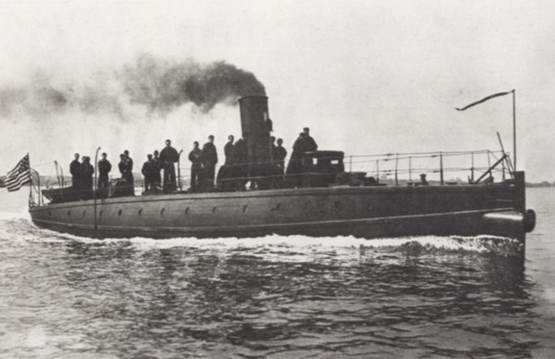
by John Palmieri
See on-line THE HERRESHOFF CATALOGUE RAISONNÉ for detailed information on HMCo. # vessels including photos, half model images and descriptive documents
Introduction
Part 4 developed the model test basis for the hull design of STILETTO (HMCo. #118) and identified the torpedo machinery and vessel business opportunities opening to Herreshoff. Part 5 covers the years 1883-1885, exploring how Capt. Nat Herreshoff's torpedo boat hull HMCo. #118 came to be built as the yacht STILETTO, the torpedo cruiser collaboration with Admiral of the Navy David Dixon Porter and ends with a view to the opportunities and risks facing the Herreshoff's in the following years. In telling the story of STILETTO we cannot be 100% sure we have it right. Neither John or Nat explained directly and completely the thinking and process that brought them to design and build STILETTO. They never wrote on the subject, save for comments by Nat in 1893 regarding the company's experience combining in one vessel, most probably STILETTO, the characteristics of a torpedo boat and a high-speed yacht. Starting from that point in 1893 the story is developed from the latest research of Herreshoff and HMCo. records, correspondence from various sources, official US Navy records and contemporary newspaper accounts.
We are also near the time when Nathanael G. Herreshoff, came to be addressed as "Capt. Nat." We certainly owe him that respect, and so address him going forward.
Figure 1- The 94-foot STILETTO (WTB-1)- the 118th steam vessel built by the Herreshoff Manufacturing Co. as converted for torpedo boat service. Launching a Howell automobile torpedo from the bow tube c. 1890. (US Navy Photo)
Combining the Torpedo Boat and the Yacht
[1] Richard S. West Jr. The Second Admiral: A Life of David Dixon Porter. (New York: Coward McCann, Inc. 1937) Pgs. 315-18.
[1] Stewart A. McKenna & Larrie D. Ferreiro, “The Scientific and Management Revolution and Shipbuilding on the ‘Two Clydes’ 1880-1900.” Nautical Research Journal Vol.58, No. 2 Summer 2013. Pages 105-128. All information about the shipyards on the Clyde and the Delaware, their technology, and dates of the technology are taken from this research paper.
On November 16 & 17, 1893, the Society of Naval Architects and Marine Engineers (SNAME) held its inaugural meeting in New York City. Naval architect William Gardner presented a paper titled. "The Steam Yacht as a Naval Auxiliary". [1]
[1] Richard S. West Jr. The Second Admiral: A Life of David Dixon Porter. (New York: Coward McCann, Inc. 1937) Pgs. 315-18.
[1] All quotes from Gardner’s paper and Capt. Nat’s written critique are taken from Transactions of the Society of Naval Architects and Marine Engineers 1893. Pages 219-225. Note: The printed critique has editorial changes from his pencil draft referenced in endnote (3). Below. All important changes are noted.
William Gardner (1858-1934) entered Cornell University at age 15 and following graduation acquired a practical knowledge of shipbuilding working in the plate shop and foundry of John Roach's Delaware River yard. Inspired by two US Navy Constructors he entered US Government service and obtained entrance to the Royal Naval College, Greenwich England where he studied the design and construction of warships including torpedo boats, followed by two years practical work in the Clyde and Tyne River shipyards. Returning to the US in 1888, he established a successful naval architect firm in New York with many famous (mostly sail) yachts to his credit.[2]
[1] Richard S. West Jr. The Second Admiral: A Life of David Dixon Porter. (New York: Coward McCann, Inc. 1937) Pgs. 315-18.
In his paper Gardner noted, "The weakest branch of our naval service at the present time is unquestionably the torpedo-boat division. We have only two in service, with a third about completed." (In service were Herreshoff's conversion the wooden torpedo boat STILETTO (WTB-1) and their 138-foot steel sea-going torpedo boat CUSHING (TB-1); under construction at the Iowa Iron Works was the 150-foot ERICSSON (TB-2).) He postulated that a "type of steam yacht now being developed, is a vessel having good accommodations below, large deck-houses, high speed, light draft, the ability to turn quickly, and to get up steam and get underway at short notice. These characteristics, as far as they go are all in keeping with torpedo-boats." He proposed an economical way to acquire a large fleet of torpedo boats was for the Government to offer "an inducement for men to build yachts adapted to this purpose".
[1] Richard S. West Jr. The Second Admiral: A Life of David Dixon Porter. (New York: Coward McCann, Inc. 1937) Pgs. 315-18.
Under Gardener's plan an owner would submit to the Navy "complete drawings of the vessel as a yacht and as a torpedo boat with specifications of the changes and additions to make the change." Upon agreement by the Navy, the owner would be paid a subsidy towards building the vessel and to provide for any structural enhancements necessary to allow rapid conversion at a future date.
[1] Richard S. West Jr. The Second Admiral: A Life of David Dixon Porter. (New York: Coward McCann, Inc. 1937) Pgs. 315-18.
Because the paper was late in submission there was no discussion, rather comments were solicited to be published later in the Transactions. Capt. Nat, one of the 22-member Council of the Society was requested by W. L. Capps of the Executive Committee, to submit a written critique of the paper. He was uniquely qualified for this task. He had done with STILETTO almost exactly what Gardner was proposing; created an efficient, low resistance, high speed hull for torpedo boat service, fitted it out as a yacht, and later reconfigured for torpedo boat service. In his critique, Capt. Nat, strongly disagreed with Gardner and from that we can infer his thinking, and experience at that time, about the Herreshoff's approach to torpedo boat design and construction.[3]
[1] Richard S. West Jr. The Second Admiral: A Life of David Dixon Porter. (New York: Coward McCann, Inc. 1937) Pgs. 315-18.
"The subject is one that has already come under the attention of our Company as builders of steam yachts and torpedo-boat for many years, and I am quite free to confess, after trying to combine the two, that the torpedo type for a yacht is not popular, and I think will never be with yachtsmen. The reasons are:
First. To obtain the very highest speeds the vessel and machinery have to be very lightly but strongly built, entailing great cost to construct. (In his pencil draft he wrote "double the cost to construct.")
Second. In being so light the life is very much shortened, and the expense of repairs and up-keep is much greater.
Third. On account of the machinery having to be designed with a smaller coefficient of safety, there is always a much greater risk of break-down, resulting in injuries or loss of life to the attendants.
A passage in one of these high-speed boats is very exciting and exhilarating, but to the owner or any one responsible for the welfare of the crew, and who is going on the boat often, the exhilaration soon wears away, and the strain on the nerves, together with the bodily fatigue from the constant vibration will soon disgust any real yachtsman with a steamer that approaches anywhere near that of a torpedo-boat in speed.
To get any comfort and pleasure in a steam yacht, about one-third of the torpedo boat's speed has to be sacrificed, and such a craft would be utterly useless in place of a true torpedo-boat in actual service."
Capt. Nat did offer, "The larger and faster of the seagoing yachts would, without a doubt, be of service to the Navy in time of war for dispatch vessels, and to patrol our coast."
[1] Richard S. West Jr. The Second Admiral: A Life of David Dixon Porter. (New York: Coward McCann, Inc. 1937) Pgs. 315-18.
Gardner responded that not running the boats at full speed on a daily basis would provide a factor of safety, and that he did not believe in cutting the weights of essential parts of the hull and machinery to the extent that was previously done. He concluded, "I do not consider that the design of a steam yacht that will make a successful torpedo boat is a simple problem…it is… a very difficult one. Every detail of the hull and machinery must be worked out with great care. It is to the mastery of difficult problems that advance in naval architecture is due."
[1] Richard S. West Jr. The Second Admiral: A Life of David Dixon Porter. (New York: Coward McCann, Inc. 1937) Pgs. 315-18.
We do not know Capt. Nat's opinion of Gardner's response, but we can assume he was not pleased. He did not need someone ten years his junior, who had never designed and built a torpedo boat, to lecture him on the means to advance the science of naval architecture. He had been mastering difficult problems, better than any of his contemporaries, since he first took pencil to paper.
[1] Richard S. West Jr. The Second Admiral: A Life of David Dixon Porter. (New York: Coward McCann, Inc. 1937) Pgs. 315-18.
STILETTO Conceived as a Torpedo Boat: The Evidence
[4] Thomas Wildenberg and Norman Polmar. Ship Killers: A History of the American Torpedo. (Annapolis, MD, USNI Press, 2010) pgs. 16-17.
The evidence related to hull and machinery demonstrate STILETTO was intended to be a torpedo boat. It starts with the two earliest surviving records of the hull design.
[40] Annual Report of The Secretary of the Navy November 28, 1881. Washington GPO 1881 Pgs. 3, 5, 6.
1. An undated, record of superimposed penciled hull sections, some with pinpricks labeled "94 ft Torpedo boat 1883". It is among similar sections for contemporary smaller Herreshoff vedettes, torpedo boats and launches.[4]
2. The second is the "No 118 "offset book dated November 16, 1883. The first page of the book Capt. Nat identifies the offsets as "94 feet Torpedo Boat Model".[5] (See Figures 2). The undated STILETTO half model was likely carved a short time before the offsets were taken; influenced by Capt. Nat's 1879 inspection of the 80-foot HMS LIGHTNING, and his model test results of Oct.-Nov. 1880.
Figure 2; STILETTO HMCo. 118 Offset Book; Source Hart Nautical Collections MIT Museum
[21] Frederick J. Rowan A.M.I.C.E., M.I.E.S. The Practical Physics of the Modern Steam Boiler. (P. S. King & Son, London; D. Van Nostrand, New York, 1903). Pg. 481.
[22] The details of HMCo #44 are taken from (1) “Torpedo Boat Experiments” Irish Times, Jan. 10, 1879, page 3. (2) “The Herreshoff Torpedo Boats” Recent Practice in Marine Engineering Two Volumes. Edited by William Henry Maw. Publisher: London Offices of Engineering, London & J. Wiley & Sons New York 1884. Pages 280-6. This document is available online at www.hathitrust.org. All quotes about HMCo #44 are from this paper.
In 1883, a 94-foot length was representative of first-class torpedo boats. The British Royal Navy had twenty 96-foot first class torpedo boats capable of 20 knots, although lengths were beginning to increase. Thornycroft was building a 113-foot vessel to carry the Whitehead torpedo and the US Naval Advisory Board, now headed by Commodore Shufeldt, recommended building a 100-foot cruising torpedo boat.[6]
[21] Frederick J. Rowan A.M.I.C.E., M.I.E.S. The Practical Physics of the Modern Steam Boiler. (P. S. King & Son, London; D. Van Nostrand, New York, 1903). Pg. 481.
[22] The details of HMCo #44 are taken from (1) “Torpedo Boat Experiments” Irish Times, Jan. 10, 1879, page 3. (2) “The Herreshoff Torpedo Boats” Recent Practice in Marine Engineering Two Volumes. Edited by William Henry Maw. Publisher: London Offices of Engineering, London & J. Wiley & Sons New York 1884. Pages 280-6. This document is available online at www.hathitrust.org. All quotes about HMCo #44 are from this paper.
Power density data of STILETTO's machinery in pounds per indicated horsepower (Figure 3) show that at the time of construction in 1885 STILETTO was at the forefront of light weight machinery for high-speed naval vessels. Light weight was achieved by use of the square boiler and a compound engine where the weight of moving parts had been reduced to a minimum, forgings replacing castings, bronze replacing steel where possible, and pistons operating at a high running speed. Also, ihp was boosted 25% by forced draft; using a steam powered blower to pressurize the fire room.[7] (For information Figure 3 includes the power density of all later HMCo. steam torpedo boats built for the U.S. Navy.) To further make the case that STILETTO's machinery was designed to be that of a torpedo boat, and not another Herreshoff high-speed yacht, we should also display power density for the latter, but have not found the data. It is a hole in our research we have yet to fill.
[21] Frederick J. Rowan A.M.I.C.E., M.I.E.S. The Practical Physics of the Modern Steam Boiler. (P. S. King & Son, London; D. Van Nostrand, New York, 1903). Pg. 481.
[22] The details of HMCo #44 are taken from (1) “Torpedo Boat Experiments” Irish Times, Jan. 10, 1879, page 3. (2) “The Herreshoff Torpedo Boats” Recent Practice in Marine Engineering Two Volumes. Edited by William Henry Maw. Publisher: London Offices of Engineering, London & J. Wiley & Sons New York 1884. Pages 280-6. This document is available online at www.hathitrust.org. All quotes about HMCo #44 are from this paper.
Figure 3: STILETTO Lightweight Machinery Comparison | Machinery Lbs/IHP
1885 | HMCo 1888-97 |
|---|---|
British Warships- 300-360 | CUSHING TB 1 - 70 |
New US Navy ABC Cruisers- Average 434 | PORTER/DUPONT TBs 6 & 7 - 50 |
British First-Class torpedo boats- 57.7 | MORRIS TB 14 - 61 |
STILETTO- 39 | GWIN/TALBOT TBs 15 & 16 - 55 |
Sources:
1. British Warships, TBs & ABC Cruisers. N. B. Clark, Chief. Engr. USN (Ret), “Motive Power for Warship” Letter to the Editor. Army Navy Journal Vol 23. March 27, 1886. Pages 713-4.
2. Herreshoff vessels calculated from available data.
There is another data point. In early 1891 Capt. Nat conducted a short study of his torpedo boats and high-speed yachts. He compared the indicated thrust per unit of vessel displacement required in speed trials of the vessel to achieve design speed (A), with the resistance of the 4½-foot 1880 model per unit of model displacement at that speed (B). The Ratio (B/A) of the torpedo boats STILETTO at 0.75 & CUSHING (HMCo. #152) at 0.73, averaged 0.74; while the high-speed yachts, the 132-foot SAY WHEN (HMCo. #150) at 0.58 and 84-foot NOW THEN (HMCo. #142) at 0.69, averaged 0.64. The torpedo boats averaged 16% better than the yachts at achieving the performance of the most efficient model in Capt. Nat's 1880 model tests.[8]
[21] Frederick J. Rowan A.M.I.C.E., M.I.E.S. The Practical Physics of the Modern Steam Boiler. (P. S. King & Son, London; D. Van Nostrand, New York, 1903). Pg. 481.
[22] The details of HMCo #44 are taken from (1) “Torpedo Boat Experiments” Irish Times, Jan. 10, 1879, page 3. (2) “The Herreshoff Torpedo Boats” Recent Practice in Marine Engineering Two Volumes. Edited by William Henry Maw. Publisher: London Offices of Engineering, London & J. Wiley & Sons New York 1884. Pages 280-6. This document is available online at www.hathitrust.org. All quotes about HMCo #44 are from this paper.
Additionally, STILETTO's hull was not that of a typical steam yacht. W. P. Stephens wrote at the time:[9]
[21] Frederick J. Rowan A.M.I.C.E., M.I.E.S. The Practical Physics of the Modern Steam Boiler. (P. S. King & Son, London; D. Van Nostrand, New York, 1903). Pg. 481.
[22] The details of HMCo #44 are taken from (1) “Torpedo Boat Experiments” Irish Times, Jan. 10, 1879, page 3. (2) “The Herreshoff Torpedo Boats” Recent Practice in Marine Engineering Two Volumes. Edited by William Henry Maw. Publisher: London Offices of Engineering, London & J. Wiley & Sons New York 1884. Pages 280-6. This document is available online at www.hathitrust.org. All quotes about HMCo #44 are from this paper.
"Her appearance outside is peculiar, as she shows the regular hull and ordinary sheer, but above the hull proper the sides are produced upward to a deck, the line of which is curved in an opposite direction to the sheer line, which it meets at bow and stern. By this construction the hull and cabin are one structure, the deck serving to brace the hull firmly, and with the cabin sides making a strong box girder of the entire ship. The effect is entirely unconventional and novel to any one familiar with the ordinary type of steam yacht so common in our waters, but it is not unpleasant, while the gain in strength is apparent."
Capt. Nat's deep hull box girder design, featuring details noted below, provided the strength and depth of hull to carry the additional weight and increased draft required in the torpedo boat configuration, plus the volume for the launching equipment and torpedo storage. While some construction features were present in contemporary HMCo. high speed yachts- for example SAY WHEN had similar diagonal straps, there was not the detail engineering as was applied to STILETTO.
[21] Frederick J. Rowan A.M.I.C.E., M.I.E.S. The Practical Physics of the Modern Steam Boiler. (P. S. King & Son, London; D. Van Nostrand, New York, 1903). Pg. 481.
[22] The details of HMCo #44 are taken from (1) “Torpedo Boat Experiments” Irish Times, Jan. 10, 1879, page 3. (2) “The Herreshoff Torpedo Boats” Recent Practice in Marine Engineering Two Volumes. Edited by William Henry Maw. Publisher: London Offices of Engineering, London & J. Wiley & Sons New York 1884. Pages 280-6. This document is available online at www.hathitrust.org. All quotes about HMCo #44 are from this paper.
The hull was divided into six watertight compartments with access only through deck hatches. An iron collision bulkhead bounded the forward most compartment. White oak frames 1-7/8" x 2" were bolted to 2½" garboards and to 3" plank floors extending across the keel. Between the garboard and thick strakes at the sheer and the load waterline the hull was double planked ¾' yellow pine over and inner planking of 5/8" white pine. Galvanized iron knees joined the frames to the deck beams with bolted connections, supporting a double planked deck of ½ inch white pine. To resist twisting the hull was strapped diagonally with 3/16“ iron; two diagonal crossing straps under the engine room and similarly under the fireroom. [10]
[21] Frederick J. Rowan A.M.I.C.E., M.I.E.S. The Practical Physics of the Modern Steam Boiler. (P. S. King & Son, London; D. Van Nostrand, New York, 1903). Pg. 481.
[22] The details of HMCo #44 are taken from (1) “Torpedo Boat Experiments” Irish Times, Jan. 10, 1879, page 3. (2) “The Herreshoff Torpedo Boats” Recent Practice in Marine Engineering Two Volumes. Edited by William Henry Maw. Publisher: London Offices of Engineering, London & J. Wiley & Sons New York 1884. Pages 280-6. This document is available online at www.hathitrust.org. All quotes about HMCo #44 are from this paper.
The full load displacement of STILETTO to its load waterline was 35.65 tons, allowing 9.2 tons of weights to be carried above its light condition of 26.45 tons (with only feed water aboard). In 1886 the Navy inspection board distributed weights as follows for the torpedo boat configuration.
[21] Frederick J. Rowan A.M.I.C.E., M.I.E.S. The Practical Physics of the Modern Steam Boiler. (P. S. King & Son, London; D. Van Nostrand, New York, 1903). Pg. 481.
[22] The details of HMCo #44 are taken from (1) “Torpedo Boat Experiments” Irish Times, Jan. 10, 1879, page 3. (2) “The Herreshoff Torpedo Boats” Recent Practice in Marine Engineering Two Volumes. Edited by William Henry Maw. Publisher: London Offices of Engineering, London & J. Wiley & Sons New York 1884. Pages 280-6. This document is available online at www.hathitrust.org. All quotes about HMCo #44 are from this paper.
● Crew of eight men and two officers, fresh water, boat and gear, etc. - 1 ton
● Two torpedo tubes or corresponding arrangement for firing torpedoes forward and three torpedoes- 3½ tons
● 37 mm Hotchkiss cannon with extra rounds and equipment- 6200 lbs.
[2] William duBarry Thomas. “The Genesis of a Professional Society”. SNAME Transactions. Vol.101, 1993, pgs.31-9.
● Allowance remaining for coal- 4 tons.
[2] William duBarry Thomas. “The Genesis of a Professional Society”. SNAME Transactions. Vol.101, 1993, pgs.31-9.
The Board concluded four tons of coal allowed a range of about 170 miles at 19 knots. A desired torpedo boat service range of 300 miles at 19 knots could be safely achieved by adding three additional tons of coal, increasing draft by only 2 inches. [11]
[21] Frederick J. Rowan A.M.I.C.E., M.I.E.S. The Practical Physics of the Modern Steam Boiler. (P. S. King & Son, London; D. Van Nostrand, New York, 1903). Pg. 481.
[22] The details of HMCo #44 are taken from (1) “Torpedo Boat Experiments” Irish Times, Jan. 10, 1879, page 3. (2) “The Herreshoff Torpedo Boats” Recent Practice in Marine Engineering Two Volumes. Edited by William Henry Maw. Publisher: London Offices of Engineering, London & J. Wiley & Sons New York 1884. Pages 280-6. This document is available online at www.hathitrust.org. All quotes about HMCo #44 are from this paper.
A remarkable achievement by Capt. Nat; without any detail Navy torpedo boat specification that we know of his full load design condition came within two inches draft of carrying all Navy requirements.
[21] Frederick J. Rowan A.M.I.C.E., M.I.E.S. The Practical Physics of the Modern Steam Boiler. (P. S. King & Son, London; D. Van Nostrand, New York, 1903). Pg. 481.
[22] The details of HMCo #44 are taken from (1) “Torpedo Boat Experiments” Irish Times, Jan. 10, 1879, page 3. (2) “The Herreshoff Torpedo Boats” Recent Practice in Marine Engineering Two Volumes. Edited by William Henry Maw. Publisher: London Offices of Engineering, London & J. Wiley & Sons New York 1884. Pages 280-6. This document is available online at www.hathitrust.org. All quotes about HMCo #44 are from this paper.
Building STILETTO Fitted as a Yacht
[4] Thomas Wildenberg and Norman Polmar. Ship Killers: A History of the American Torpedo. (Annapolis, MD, USNI Press, 2010) pgs. 16-17.
Figure 4- The 94-foot STILETTO (HMCo #118) May 30,1885, four weeks after initial trials and prior to racing the MARY POWELL. (Stebbins photo. Source Herreshoff Marine Museum scan files #130.)
[21] Frederick J. Rowan A.M.I.C.E., M.I.E.S. The Practical Physics of the Modern Steam Boiler. (P. S. King & Son, London; D. Van Nostrand, New York, 1903). Pg. 481.
[22] The details of HMCo #44 are taken from (1) “Torpedo Boat Experiments” Irish Times, Jan. 10, 1879, page 3. (2) “The Herreshoff Torpedo Boats” Recent Practice in Marine Engineering Two Volumes. Edited by William Henry Maw. Publisher: London Offices of Engineering, London & J. Wiley & Sons New York 1884. Pages 280-6. This document is available online at www.hathitrust.org. All quotes about HMCo #44 are from this paper.
The first press reports of building STILETTO appeared in Dec. 1884. She was launched in April 1885, completed in May and famously beat the fast Hudson River steamer MARY POWELL in June.[12] Since Capt. Nat recorded the model offsets in Nov. 1883 why the one-year delay in the start of construction and why not build as a torpedo boat, funded by a US Navy contract? The answer is not simple; let's explore the factors at play leading to the probable point of decision in late summer, early autumn of 1884 to build STILETTO fitted as a yacht.
[40] Annual Report of The Secretary of the Navy November 28, 1881. Washington GPO 1881 Pgs. 3, 5, 6.
L. Francis Herreshoff: The Financial Case
[4] Thomas Wildenberg and Norman Polmar. Ship Killers: A History of the American Torpedo. (Annapolis, MD, USNI Press, 2010) pgs. 16-17.
L. Francis Herreshoff credits the decision to fit STILETTO as a yacht to business success, "By 1885, the brothers were quite prosperous, so they decided to build for themselves a high-speed steam yacht, the 'Stiletto..." [13] While we do not have information on personal wealth of the Herreshoff brothers or the financial performance of the company we can gauge financial conditions from two historical records. First, as discussed in Part 4, by 1884 HMCo. had completed a plant expansion (financed from profits) that almost doubled its valuation. With this complete, cash was available for other uses. Second, from the cash account records in Capt. Nat's diaries (Figure 5) we can track Capt. Nat's compensation in HMCo. salary and dividends from 1881 to 1903. This covers the torpedo boat years through 1898 and the America's Cup successes of 1893, 1895, 1899, 1901 & 1903. 1903 is the year of their greatest Cup victory with RELIANCE, and the highpoint of Nat's compensation from HMCo. Over the 22-year period, Capt. Nat's salary more than quadrupled and HMCo. annual dividends went from nothing to more than six times his salary. The numbers confirm L. Francis' 1885 "prosperity" statement; 1885 was the third year of HMCo. delivering substantial dividends to the brothers.
[21] Frederick J. Rowan A.M.I.C.E., M.I.E.S. The Practical Physics of the Modern Steam Boiler. (P. S. King & Son, London; D. Van Nostrand, New York, 1903). Pg. 481.
[22] The details of HMCo #44 are taken from (1) “Torpedo Boat Experiments” Irish Times, Jan. 10, 1879, page 3. (2) “The Herreshoff Torpedo Boats” Recent Practice in Marine Engineering Two Volumes. Edited by William Henry Maw. Publisher: London Offices of Engineering, London & J. Wiley & Sons New York 1884. Pages 280-6. This document is available online at www.hathitrust.org. All quotes about HMCo #44 are from this paper.
Figure 5: Captain Nat's Compensation from HMCo. 1881-1903
Year | HMCo. Salary | HMCo. Dividends | HMCo. Total Compensation |
|---|---|---|---|
1881 | $1540 | $0 | $1540 |
1882 | $1776 | $0 | $1776 |
1883 | $1800 | $4198 | $5998 |
1884 | $1800 | $2500 | $4300 |
1885 | $1800 | $5000 | $6800 |
1886 | $1875 | $5000 | $6875 |
1887 | $1920 | $7500 | $9420 |
1888 | $1920 | $3750 | $5670 |
1889 | $2160 | $4750 | $6910 |
1890 | $2160 | $4625 | $6785 |
1891 | $2340 | $4712.50 | $7052.50 |
1892 | $2340 | $0 | $2340 |
1893 | $3005 | $5250 | $8255 |
1894 | $5200 | $2500 | $7700 |
1895 | $5200 | $3250 | $8450 |
1896 | $6500 | $3500 | $10000 |
1897 | $6500 | $5000 | $11500 |
1898 | $6500 | $18500 | $25000 |
1899 | $6500 | $6850 | $13350 |
1900 | $6500 | $14500 | $21000 |
1901 (Diary is blank) | |||
1902 | $6500 | $2500 | $9000 |
1903 | $6500 | $42500 | $49000 |
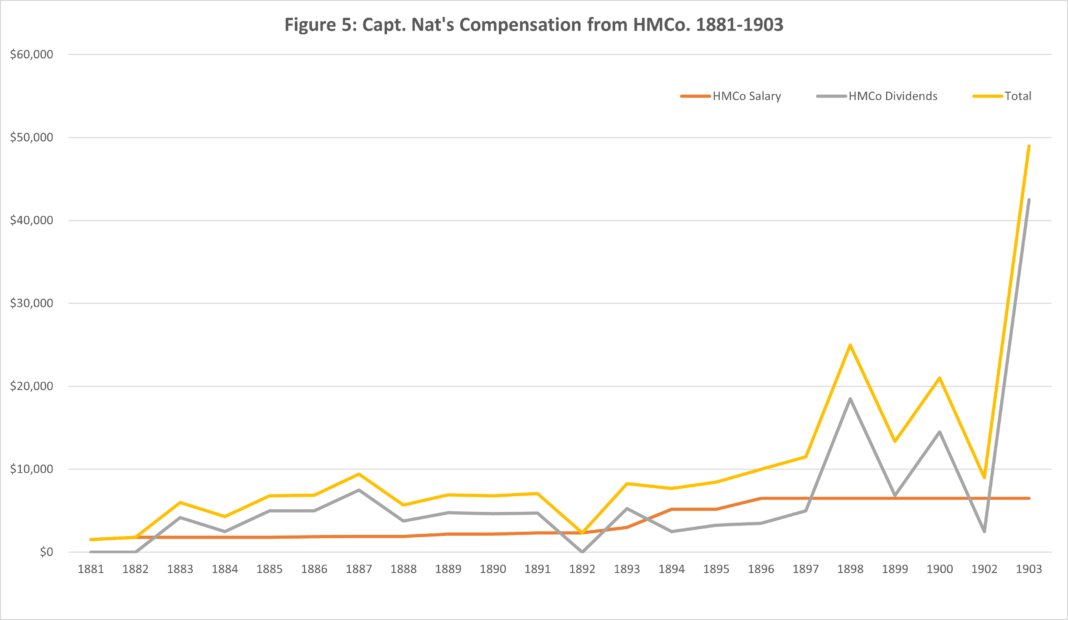
Does not include bonuses from America’s Cup Syndicates, misc, checks from JBH & payment for other services.
Source “Curator Herreshoff Marine Museum Memo Feb. 5, 2012, Extraction of NGH Financial Data from Cash Accounts in NGH Personal Diaries, 1881-1915.” Nathanael G. Herreshoff Collection. Access courtesy Halsey C. Herreshoff.
Evolving Technology at HMCo.: The Square Boiler (Figure 6)
[4] Thomas Wildenberg and Norman Polmar. Ship Killers: A History of the American Torpedo. (Annapolis, MD, USNI Press, 2010) pgs. 16-17.
Within the HMCo. the continuing evolution of new technology was the one constant. In June 1883 Capt. Nat first introduced the Herreshoff patent safety square boiler, an important element of STILETTO's design. The coil boiler had expanded in size and power to its physical limits, and problems in service were becoming more evident.[14] By early 1884 deliveries were almost exclusively with the square boiler. It was patented as a "safety boiler" because like the coil boiler there was no riveted steam drum containing a large volume of high-pressure steam at the risk of catastrophic material failure. The boiler was made up of short straight pipes joined by return bends and arranged vertically in ten flats of pipes arranged in a 58 inch square. It bettered the coil boiler in ease of manufacture, ability to scale to larger sizes, service life and ease of operation.[15]
[21] Frederick J. Rowan A.M.I.C.E., M.I.E.S. The Practical Physics of the Modern Steam Boiler. (P. S. King & Son, London; D. Van Nostrand, New York, 1903). Pg. 481.
[22] The details of HMCo #44 are taken from (1) “Torpedo Boat Experiments” Irish Times, Jan. 10, 1879, page 3. (2) “The Herreshoff Torpedo Boats” Recent Practice in Marine Engineering Two Volumes. Edited by William Henry Maw. Publisher: London Offices of Engineering, London & J. Wiley & Sons New York 1884. Pages 280-6. This document is available online at www.hathitrust.org. All quotes about HMCo #44 are from this paper.
Figure 6 STILETTO's Square Boiler from LFH's Capt. Nat: Wizard of Bristol Page 102
[40] Annual Report of The Secretary of the Navy November 28, 1881. Washington GPO 1881 Pgs. 3, 5, 6.
Admiral of the Navy David Dixon Porter and the Torpedo Gunboat
[4] Thomas Wildenberg and Norman Polmar. Ship Killers: A History of the American Torpedo. (Annapolis, MD, USNI Press, 2010) pgs. 16-17.
A new opportunity, or maybe a distraction. In Spring 1884 Admiral Porter (now age 73) contacted the Herreshoff Brothers to provide an estimate of propulsion machinery for a new twin-screw torpedo gunboat design that he was planning to present to Congress. Designed for coast defense the vessel featured a big 10-inch gun. It was a modern replacement for his 1873, 800 ton, 15-inch gunned, spar torpedo vessel ALARM. Capt. Nat responded with a design incorporating four large coil boilers (16 tons each) and two compound engines (25 tons each), featuring one 27-inch diameter high pressure cylinder and two-30-inch low pressure cylinders.[16] If built these would have opened a new opportunity for the company; a supplier of high-power propulsion machinery for gunboat/cruiser-size warships. Its potential must have caused Nat and John to pause at the time before they were ready to take on another project, such as building STILETTO. Figure 7 displays the first page of Capt. Nat's preliminary machinery design and a comparison of Porter's torpedo gunboat with one designed by the Bureaus for the Naval Advisory Board. With Herreshoff machinery Porter's gunboat is 30% faster. Measured in pounds of machinery per HP, Herreshoff is 1/6th that of the Bureau design. The difference is compound vs single stage engines and the coil boiler vs the locomotive-type fire tube boiler. Porter testified before Congress about his proposal and submitted it in November 1884 with his annual report.[17] A Senate bill appropriating $250,000 was introduced for "one gunboat not to exceed 900 tons, to be built to plans and specifications furnished by Admiral Porter and under his supervision and direction."[18] Porter lobbied the House of Representatives, writing Congressman John R. Thomas (IL), of the House Naval Committee extolling the, "Herreshoff Steam Generator" and boasting, "If the proposed gunboats are not the fastest vessels afloat (if built) it will not be for want of good models, plenty of steam power and the best and simplest engines ever put in a ship." [19] Not funded in 1884, Porter continued to push for his torpedo cruiser with design and cost updates through 1886.
[21] Frederick J. Rowan A.M.I.C.E., M.I.E.S. The Practical Physics of the Modern Steam Boiler. (P. S. King & Son, London; D. Van Nostrand, New York, 1903). Pg. 481.
[22] The details of HMCo #44 are taken from (1) “Torpedo Boat Experiments” Irish Times, Jan. 10, 1879, page 3. (2) “The Herreshoff Torpedo Boats” Recent Practice in Marine Engineering Two Volumes. Edited by William Henry Maw. Publisher: London Offices of Engineering, London & J. Wiley & Sons New York 1884. Pages 280-6. This document is available online at www.hathitrust.org. All quotes about HMCo #44 are from this paper.
Figure 7: 1884 Advantage of Herreshoff Machinery
ADM Porter’s Twin-screw Torpedo Gunboat Design
The Decision
[4] Thomas Wildenberg and Norman Polmar. Ship Killers: A History of the American Torpedo. (Annapolis, MD, USNI Press, 2010) pgs. 16-17.
In early 1884 the prospect of Herreshoff obtaining government funding to complete the hull design and build HMCo. #118 as a torpedo boat was not good.
[21] Frederick J. Rowan A.M.I.C.E., M.I.E.S. The Practical Physics of the Modern Steam Boiler. (P. S. King & Son, London; D. Van Nostrand, New York, 1903). Pg. 481.
[22] The details of HMCo #44 are taken from (1) “Torpedo Boat Experiments” Irish Times, Jan. 10, 1879, page 3. (2) “The Herreshoff Torpedo Boats” Recent Practice in Marine Engineering Two Volumes. Edited by William Henry Maw. Publisher: London Offices of Engineering, London & J. Wiley & Sons New York 1884. Pages 280-6. This document is available online at www.hathitrust.org. All quotes about HMCo #44 are from this paper.
In 1883 Congress had initiated funding to develop the automobile torpedo. However, they authorized vendor payment only after the successful conduct of trials and selection of the specific design by a naval board. The cost of all trials and experimental vehicles were the responsibility of the vendor. Whitehead and Schwarzkopff, the leading European torpedo builders refused to underwrite these costs. This delayed the introduction of the weapon into the US Navy. As the Naval Advisory Board explained in 1884, although there were American inventions of promise only the Whitehead torpedo had passed through all experimental stages and had been selected worldwide as a "completed weapon of war".[20] Without a weapon to carry and test, the design requirements for a torpedo boat were uncertain.
[40] Annual Report of The Secretary of the Navy November 28, 1881. Washington GPO 1881 Pgs. 3, 5, 6.
The aversion of Congress to the risk of providing initial funding of new technologies and designs before they had been funded and proven by the vendor extended to vessels of the New Navy and was also evident in the Navy itself. Passed Assistant Chief Engineer Frank M. Bennett, who wrote extensively about this period noted; "there was at that time a decided sentiment in the Navy in favor of imitating the British."[21] That is why in Figure 3 the power density of the ABCD ships of the New Navy were not as aggressive as the British Warships. The US was using proven British machinery designs- some said "obsolete", not their very latest technology. The US was not alone. In 1886 assessing the experience of the ABCD ships the Secretary of the Navy William C. Whitney noted, "For twenty years the principal market for modern war vessels has been England. Russia, Germany, Italy, Chili, Brazil, Japan have all procured in the English market vessels reckoned among the best in their respective fleets. Great efforts have been made in most to develop ship construction at home, but not without first availing of the latest products attainable elsewhere as a basis upon which to build their own subsequent improvements and developments." [22]
[40] Annual Report of The Secretary of the Navy November 28, 1881. Washington GPO 1881 Pgs. 3, 5, 6.
The Navy had good knowledge of the developments at HMCo. Both BuC&R and BuSteam had an inspector in the yard for contracts building launches for the ABCD ships.[23] New HMCo. developments and deliveries were well reported. Navy inspection teams availed themselves of John's invitation to trial new yachts, boilers, and engines. There were ample opportunities for the Herreshoff's to make their case for HMCo. #118 as a torpedo boat with representatives of the Bureau of Ordnance (BuOrd) and the Torpedo Corps at the Newport Torpedo Station. Remember, at that time, both were solely responsible for development of the torpedo warfare capability including torpedo boats.
[40] Annual Report of The Secretary of the Navy November 28, 1881. Washington GPO 1881 Pgs. 3, 5, 6.
The Navy's recommendation to Congress for construction of a sea-going torpedo boat was also evolving. First a recommendation to purchase from one of the most "celebrated makers abroad" as a demonstration for study and test. A not unexpected recommendation as foreign construction of first class (harbor and sea going) torpedo boats was on the rise. In 1885 alone 49 first class torpedo boats to carry the Whitehead automobile torpedo were laid down in Britain by Thornycroft and Yarrow for the Royal Navy in sizes up to 127½ feet.[24] Also in the mix were recommendations to build in the US to a British design at no higher price; and build in the US to a US Navy specification, using domestic steel, for a price no higher than what could be obtained abroad. The size was also growing from 100 feet to 130 or more. For the US builds there were penalties if results equal to those of foreign boats were not obtained. [25]
[40] Annual Report of The Secretary of the Navy November 28, 1881. Washington GPO 1881 Pgs. 3, 5, 6.
This all led to a decision in Fall 1884 following several high-level visits of Navy officials and a congressional delegation to both Newport and the Herreshoff works in Bristol. Secretary of the Navy Chandler and a separate board of naval officers visited Bristol, making a tour of inspection of Herreshoff in which they were "pleased". Chandler and President Chester A. Arthur observed naval exercises of the North Atlantic Squadron at Newport. ADM Porter spent a few weeks in Newport with reported visits to the Torpedo Station. His annual reports throughout the period dwelled strongly upon the necessity of gunboats and torpedo boats. But most importantly Chandler accompanied by the Senate Ordnance Committee viewed the state of US naval torpedo development at the Torpedo Station. As reported in the Army & Navy Journal under the heading "The Naval Torpedo Service" this visit documented a deplorable condition. The US, "originator of the torpedo as an engine of war, has not yet got beyond the primitive idea of a bag of powder on the end of a pole". The Journal conjectured that the Torpedo Station's only fast spar torpedo boat, Herreshoff's 1876 LIGHTNING, was not exhibited because it was considered to antiquated and embarrassing to display before the Committee. [26]
[40] Annual Report of The Secretary of the Navy November 28, 1881. Washington GPO 1881 Pgs. 3, 5, 6.
We surmise through the summer and early Fall the message to the Herreshoff brothers was-
[40] Annual Report of The Secretary of the Navy November 28, 1881. Washington GPO 1881 Pgs. 3, 5, 6.
1. Neither Congress nor the Navy would support funding a Herreshoff high-speed torpedo boat designed to launch the automobile torpedo based upon a proposed paper design and performance projections, but
2. if Herreshoff were to fund and build the vessel, and prove its performance in operation, including US Navy trials, the Navy had a need and would seek funding from Congress for its purchase.
Selling STILETTO for Torpedo Boat Service
[4] Thomas Wildenberg and Norman Polmar. Ship Killers: A History of the American Torpedo. (Annapolis, MD, USNI Press, 2010) pgs. 16-17.
The selling began at about the time of launching in April 1885. W. P. Stephens wrote the main object of STILETTO was to better all previous speed records, and that "little change is necessary to convert her into a first-class torpedo boat."[27]
[21] Frederick J. Rowan A.M.I.C.E., M.I.E.S. The Practical Physics of the Modern Steam Boiler. (P. S. King & Son, London; D. Van Nostrand, New York, 1903). Pg. 481.
[22] The details of HMCo #44 are taken from (1) “Torpedo Boat Experiments” Irish Times, Jan. 10, 1879, page 3. (2) “The Herreshoff Torpedo Boats” Recent Practice in Marine Engineering Two Volumes. Edited by William Henry Maw. Publisher: London Offices of Engineering, London & J. Wiley & Sons New York 1884. Pages 280-6. This document is available online at www.hathitrust.org. All quotes about HMCo #44 are from this paper.
Beating MARY POWELL was electrifying- To quote the New York Times (Figure 8 New York Times, June 15, 1885)- "No event in the last 20 years has created so profound and widespread an interest among shipping merchants, steamboatmen, and yachtsmen as the performance on Wednesday last of the little steam yacht Stiletto in beating the fast steamer Mary Powell."[28]
[40] Annual Report of The Secretary of the Navy November 28, 1881. Washington GPO 1881 Pgs. 3, 5, 6.
John Brown Herreshoff used the NYT article to immediately send the message to the Navy that STILETTO was for them-
[40] Annual Report of The Secretary of the Navy November 28, 1881. Washington GPO 1881 Pgs. 3, 5, 6.
● "the hull of the Stiletto is the product of a series of experiments made with models in the same manner as was followed by Froude, the English shipbuilder, and of the improvements suggested by tests of the numerous steamers previously built by the Herreshoff Company."[29] This addressed a major want of the BuC&R; they were convinced of the need for experimental works for determining the resistance of ships by towing models.[30] Herreshoff had done for STILETTO what they hoped to do in the future if Congress provided the funds.
[2] William duBarry Thomas. “The Genesis of a Professional Society”. SNAME Transactions. Vol.101, 1993, pgs.31-9.
● "We have made as much as 25 miles an hour with the Stiletto, and she can probably make as much as 27 miles." John then went through systematically in detail the hull, boiler and engine features that set STILETTO apart from an ordinary yacht, and serviceable to the government as a torpedo boat or possibly a high speed, dynamite-gun armed, vessel to defeat the ironclads.
[2] William duBarry Thomas. “The Genesis of a Professional Society”. SNAME Transactions. Vol.101, 1993, pgs.31-9.
John followed by inviting the new Secretary of the Navy William C. Whitney (brought in with the new administration of Grover Cleveland) to Bristol on July 20, 1885. Whitney accompanied by LCDR George Converse, just reassigned to the Torpedo Station as Assistant Inspector Ordnance after service with the US European Squadron and BuOrd, was transported to Bristol from Newport by STILETTO in "about 30 minutes" and upon touring the company Whitney was "somewhat astonished at the extent of the Herreshoff Manufacturing Co.'s Works and the facilities for constructing not only steam and sailing yacht put a larger class of cruisers, should a contract be awarded them."[31]
[40] Annual Report of The Secretary of the Navy November 28, 1881. Washington GPO 1881 Pgs. 3, 5, 6.
This was John selling Herreshoff while supporting ADM Porter's torpedo cruiser. More than that it demonstrates that John saw the torpedo cruiser as not just machinery, rather an opportunity to build larger vessels. We do not know what was meant by "a larger class of cruisers". Certainly not the 900–950 ton torpedo cruiser, as the Herreshoff building shops and launch ways when fully built out were limited to possibly 200 foot length and 200 tons.
[40] Annual Report of The Secretary of the Navy November 28, 1881. Washington GPO 1881 Pgs. 3, 5, 6.
Figure 8: NYT article Separate “The Stilettos Great Speed” June 15, 1885) Click Here to view larger.
Looking Forward from 1885
[4] Thomas Wildenberg and Norman Polmar. Ship Killers: A History of the American Torpedo. (Annapolis, MD, USNI Press, 2010) pgs. 16-17.
As 1885 came to an end John must have been pleased about the company's torpedo boat prospects. STILETTO's performance had been both remarkable and well received. He was making good progress on selling STILETTO to the Navy, to be their second Herreshoff designed torpedo boat and like LIGHTNING through a sole source contract without competition. He had a new powerful ally in Admiral of the Navy David Dixon Porter and an opportunity in the torpedo cruiser. The Navy and Congress were getting closer to agreement on funding a sea-going torpedo boat and the option of building to a US design was in the mix. LCDR George Converse who had collaborated so well with Nat in LIGHTNING had returned to the Torpedo Station in Newport, with a good collection of literature and reports on foreign torpedo boat developments amassed from his time in Europe and knowledge of the activities at torpedo boat builders Thornycroft and Yarrow. [32]
[21] Frederick J. Rowan A.M.I.C.E., M.I.E.S. The Practical Physics of the Modern Steam Boiler. (P. S. King & Son, London; D. Van Nostrand, New York, 1903). Pg. 481.
[22] The details of HMCo #44 are taken from (1) “Torpedo Boat Experiments” Irish Times, Jan. 10, 1879, page 3. (2) “The Herreshoff Torpedo Boats” Recent Practice in Marine Engineering Two Volumes. Edited by William Henry Maw. Publisher: London Offices of Engineering, London & J. Wiley & Sons New York 1884. Pages 280-6. This document is available online at www.hathitrust.org. All quotes about HMCo #44 are from this paper.
There were however organizational battles within the Navy concerning who called the shots on the vessels to be built and their designs that ultimately would have a major impact on Herreshoff fortunes in the torpedo boat business. In 1884 Secretary of the Navy, William Chandler, dissatisfied with Congress placing the Naval Advisory Board between him and the bureaus proposed, combining the Bureaus of C&R, Steam and Equipment into a single Bureau of Construction to "give unity of responsibility and power in the construction of ships" and obviate the need for the Board. [33] There would then be two material bureaus, Construction and Ordnance. The Bureau of Ordnance would lose its authority to control the design and construction of the torpedo boat. BuC&R agreed with the Secretary; they saw BuSteam and its steam engineers as lacking in breath of education and experience to do their job, but further they believed that all vessels should be built to Bureau designs with construction split between private and government yards, and proposed steps to improve professionalism of constructors and steam engineers.[34]
[21] Frederick J. Rowan A.M.I.C.E., M.I.E.S. The Practical Physics of the Modern Steam Boiler. (P. S. King & Son, London; D. Van Nostrand, New York, 1903). Pg. 481.
[22] The details of HMCo #44 are taken from (1) “Torpedo Boat Experiments” Irish Times, Jan. 10, 1879, page 3. (2) “The Herreshoff Torpedo Boats” Recent Practice in Marine Engineering Two Volumes. Edited by William Henry Maw. Publisher: London Offices of Engineering, London & J. Wiley & Sons New York 1884. Pages 280-6. This document is available online at www.hathitrust.org. All quotes about HMCo #44 are from this paper.
The idea of Bureau designs ran counter however to the thinking of the incoming Secretary of the Navy William C. Whitney. He devoted a good deal of his first annual report in 1885 to two subjects
[40] Annual Report of The Secretary of the Navy November 28, 1881. Washington GPO 1881 Pgs. 3, 5, 6.
1. The investigation of the failures of the contracts of the ABCD ships, removing them from the private builders and the eventual completion of the ships in Navy yards.
2. Addressing evidence there is "something radically wrong with the Department".
By this he meant the organization and administration of the department, as differentiated from the naval service. An issue expressed to him by "both political parties and quite universally by naval officers" hoping for "some remedy".[35] He noted the heads of the independent bureaus, instead of cooperating, worked independently of each other in producing their respective parts of a ship. They maintained independent shops in the Navy Yards duplicating functions at significant cost. The problems within his authority he planned to fix, he asked Congress to help where legislation was needed. He was not to be successful with hoped for congressional action as the bonds between the independent bureaus and the overseeing congressional committees were strong and lasting.
[21] Frederick J. Rowan A.M.I.C.E., M.I.E.S. The Practical Physics of the Modern Steam Boiler. (P. S. King & Son, London; D. Van Nostrand, New York, 1903). Pg. 481.
[22] The details of HMCo #44 are taken from (1) “Torpedo Boat Experiments” Irish Times, Jan. 10, 1879, page 3. (2) “The Herreshoff Torpedo Boats” Recent Practice in Marine Engineering Two Volumes. Edited by William Henry Maw. Publisher: London Offices of Engineering, London & J. Wiley & Sons New York 1884. Pages 280-6. This document is available online at www.hathitrust.org. All quotes about HMCo #44 are from this paper.
Whitney also attacked the idea of the Bureaus naval constructors and steam engineers designing our new ships. A naval vessel is a product of science. This is recognized by the leading navies. In England and France constructors and design engineers receive years of rigorous education and experience entirely different from that of a line officer. Our engineer corps (steam engineers) is staffed with Naval Academy graduates trained as line officers receiving no special education save for two students per year we are allowed to send to advanced courses at naval colleges in England and France. Even with the advanced training, England depends largely upon private enterprise for its ships. No designing engineer of the English Admiralty has designed an engine for many years; instead, private engine builders are invited to compete to accomplish defined results with liberal premiums and penalties to encourage performance. The Admiralty designer acts as a critic of the plans and as a general advisor; he is allowed time for study and keeping up with his art. On the contrary our head of BuSteam is selected from a corps that is given only elementary training in the science of engineering; is loaded down with executive duties including managing contracts and shops in the navy yards; and is also expected to "design the most complicated machinery and give his country the benefit of the daily improvements in his art".[36]
[21] Frederick J. Rowan A.M.I.C.E., M.I.E.S. The Practical Physics of the Modern Steam Boiler. (P. S. King & Son, London; D. Van Nostrand, New York, 1903). Pg. 481.
[22] The details of HMCo #44 are taken from (1) “Torpedo Boat Experiments” Irish Times, Jan. 10, 1879, page 3. (2) “The Herreshoff Torpedo Boats” Recent Practice in Marine Engineering Two Volumes. Edited by William Henry Maw. Publisher: London Offices of Engineering, London & J. Wiley & Sons New York 1884. Pages 280-6. This document is available online at www.hathitrust.org. All quotes about HMCo #44 are from this paper.
This issue, who was to be the designer, was at the heart of the matter for Herreshoff going forward in the torpedo boat business. There are two reasons.
[21] Frederick J. Rowan A.M.I.C.E., M.I.E.S. The Practical Physics of the Modern Steam Boiler. (P. S. King & Son, London; D. Van Nostrand, New York, 1903). Pg. 481.
[22] The details of HMCo #44 are taken from (1) “Torpedo Boat Experiments” Irish Times, Jan. 10, 1879, page 3. (2) “The Herreshoff Torpedo Boats” Recent Practice in Marine Engineering Two Volumes. Edited by William Henry Maw. Publisher: London Offices of Engineering, London & J. Wiley & Sons New York 1884. Pages 280-6. This document is available online at www.hathitrust.org. All quotes about HMCo #44 are from this paper.
1. Herreshoff was unique because they alone never bid to build to a Bureau design. If the request for proposal did not allow a contractor design, Herreshoff did not bid. If the request for proposal allowed building to a specification using either a contractor or Bureau design, they were disadvantaged because the Bureaus reported annually to Congress as a matter of "performance" the percentage of new vessels and machinery built to Bureau designs. Bid evaluations were potentially biased, whether overtly or not, in the effort to make the "Bureau design percent" as large as possible.
2. It was the source of the personal animosity (Nat called it "jealousy" in an 1897 letter to Assistant Secretary of the Navy Theodore Roosevelt) between Capt. Nat and the Bureaus. He was the scientist, the constructor, the design engineer Secretary Whitney envisioned; involved, improving his art every day. He knew it and so did his critics in the Bureaus.
In Part 6 we cover events over the following 10 years including the conversion of STILETTO to a torpedo boat, run the torpedo gunboat (cruiser) story to its end, and introduce the US Navy’s first steel sea-going torpedo boat CUSHING (TB-1).
[21] Frederick J. Rowan A.M.I.C.E., M.I.E.S. The Practical Physics of the Modern Steam Boiler. (P. S. King & Son, London; D. Van Nostrand, New York, 1903). Pg. 481.
[22] The details of HMCo #44 are taken from (1) “Torpedo Boat Experiments” Irish Times, Jan. 10, 1879, page 3. (2) “The Herreshoff Torpedo Boats” Recent Practice in Marine Engineering Two Volumes. Edited by William Henry Maw. Publisher: London Offices of Engineering, London & J. Wiley & Sons New York 1884. Pages 280-6. This document is available online at www.hathitrust.org. All quotes about HMCo #44 are from this paper.
[1] All quotes from Gardner’s paper and Capt. Nat’s written critique are taken from Transactions of the Society of Naval Architects and Marine Engineers 1893. Pages 219-225. Note: The printed critique has editorial changes from his pencil draft referenced in endnote (3). Below. All important changes are noted.
[2] classicyachtinfo.com/designer/william-gardner/
[3] N. G. Herreshoff, draft letter to Capps, W.L. (SNAME). Nathanael G. Herreshoff Collection, Herreshoff Marine Museum. MRDW02, Folder [no #]. Dec. 17, 1893. Access courtesy Halsey C. Herreshoff.
[4] Source NGH penciled hull sections. Nathanael G. Herreshoff Collection. Herreshoff Marine Museum. Folder 45. Access courtesy Halsey C. Herreshoff.
[5] "HMCo. # 118", Offset Booklet, 1885. MIT Museum, Cambridge MA. https://collections.mitmuseum.org/object/hh-4-014/. (Note it is misidentified as 1885; should be 1883.)
[6] All specifics on 1883 TBs taken from the US Army and Navy Journal and Gazette. Twenty 96-foot TBs, April 28, 1883, p. 893. Thornycroft 113-ft TB, “New Torpedo Boats”, Sept. 22, 1883, p. 154. Naval Advisory Board, 100-ft Cruising TB, Jan. 6, 1883, p. 509.
[7] The blower shows on the fireroom bulkhead Part 4, Figure 13- STILETTO HMCo. #118 As Originally Built “Torpedo Boat fitted as yacht” (Source HMCo. Drawing 119-016, HH.5.09732, Haffenreffer-Herreshoff Collection, MIT Museum.
[8] NGH Undated & untitled comparison table of CUSHING, SAY WHEN, STILETTO, NOW THEN, & a Proposed 118-foot vessel. NGH Naval Architecture and Engineering Notes, Book 2 of 5. Location in the book suggests table prepared early 1891. STILETTO data is given for two IHP’s, 425 & 450; we have selected 450 as that was the advertised ihp under forced draft. Access courtesy Halsey C. Herreshoff.
[9] W. P. Stephens, “The Herreshoff Works at Bristol”, Forest and Stream, April 16, 1885. Pgs. 236-7
[10] Report of torpedo boat STILETTO inspection and trials to the Secretary of the Navy, July 10, 1886. CDR. W. T. Sampson USN, President of Board. Pgs. 2-3.
[11] Report of STILETTO inspection and trials board. Pgs. 9-10.
[12] See the Herreshoff Catalogue Raisonnè, STILETTO (HMCo. #118) for contemporary news articles.
[13] L. Francis Herreshoff, Capt. Nat; The Wizard of Bristol. (Sheridan House Dobbs Ferry New York 1956) pg. 102.
[14] The long coil was difficult to manufacture, could not be mechanically cleaned in service, had a limited life and required continual attention to maintain correct steam flow to avoid burning out tubes and excessive superheat from inadequate flow or conversely water carry over into the engine from excessive flow. The Admiralty noted it took an especially attentive boiler tender to operate; the problem they did not have such a rating in their Navy- they only had boiler tenders. These problems were exacerbated with increase in size as the coils grew from the original 22-inch diameter to as much as 7-feet.
[15] Instructions for operating the square boiler can be found in L. Francis Herreshoff Collection, 1925-1971 Coll. 138 – Box 16, Folder 29. Mystic Seaport.
[16] NGH “Estimate of Machinery for Torpedo Vessel of Adl Porter Design,” Naval Architecture & Eng’g. Notes; Book 2 of 5. Spring of 1884. Two pages. On page 2 Capt. Nat provides two engine designs A & B. He notes (in Nov. 1886) that B was adopted, but never finished. Access courtesy Halsey C. Herreshoff.
[17] David Dixon Porter, “Report of the Admiral of the Navy” Appendix #2, Nov. 12, 1884. Annual Report of the Secretary of the Navy 1884, Vol 1(Wash DC, GPO 1884) Dec. 1, 1884. Pgs. 62-63
[18] Senate discussions on ADM Porter’s gunboat are from The Weekly Pantograph, Bloomington, IL. March 7, 1884. Boston Globe “A Navy Wanted- Senators Discussing the Question of Building Warships” Feb. 27, 1884. Baltimore Sun Feb. 19, 1884
[19] Letter Admiral David Dixon Porter to Congressman John R. Thomas of the Naval Committee, July 5 ,1884.
[20] Annual Report of the Secretary of the Navy 1884, Vol 1, Pg. 12
[21] Frank M. Bennett, Passed Assistant Engineer, US Navy, The Steam Navy of the United States: A History of the Growth of the Steam Vessel of War in the US Navy, and of the Naval Engineer Corps. (W. T. Nicholson, Pittsburgh, PA, 1896. Pg. 789.
[22] “Report of the Secretary of The Navy Dec. 1, 1886 William C. Whitney”. Annual Report of The Secretary of the Navy with Accompanying Documents for the Year 1886. Washington GPO 1886. Pgs. 6-7.
[23] The orders of inspectors in and out of HMCo. were reported in the Army and Navy Journal.
[24] Edgar G. Smith, A Short History of Naval and Marine Engineering, (Cambridge University Press, Cambridge UK 1938) Pg.259.
[25] Summarized from Naval Advisory Board and BuOrd recommendations published in Secretary of the Navy Annual Reports.
[26] Summarized from Bristol Phoenix July 26, 1884, Army and Navy Journal, Vol 22, Sept. 6, 1884, pg. 105; “The Naval Torpedo Boat Service” Sept. 20, 1884, pg. 146-7; and Oct. 11, 1884, pg. 201.
[27] W. P. Stephens, “The Herreshoff Works at Bristol”, Forest and Stream, April 16, 1885. Pgs. 236-7.
[28] "The Stiletto's Great Speed. The Principles Upon Which The New Yacht is Built." New York Times, June 15, 1885, p. 8.
[29] “Stiletto's Great Speed”. NYT June 15, 1885. P. 8.
[30] Annual Report of the Secretary of the Navy 1884, Vol 1 (Wash DC, GPO 1884) Dec. 1, 1884. Pg. 31
[31] Whitney’s visit to HMCo. and associated quotes are from "Local Affairs." Bristol Phoenix, July 25, 1885, p. 2.
[32] Converse’s collected papers including photographs can be found online at George Albert Converse Papers and Photographs (MSS 0068x), DeGolyer Library, Southern Methodist University.
[33] Annual Report of the Secretary of the Navy 1884, Vol 1 (Wash DC, GPO 1884) Dec. 1, 1884. Pg. 26
[34] “Annual Report T. D. Wilson, Chief BuC&R, Nov. 1, 1883 “Annual Report of the Secretary of the Navy 1884, Vol 1 (Wash DC, GPO 1884) Dec. 1, 1884. Pgs. 276-90. Wilson’s report on this subject followed the consistent thinking of the Bureau since its first post-Civil War evaluations.
[35] “The Organization of the Department”, Annual Report of the Secretary of the Navy 1885, Vol 1 (Wash DC, GPO 1884) Pgs. XXVII- XLI.
[36] Summarized from “The Organization of the Department”. Pgs. XXVII-XLI.
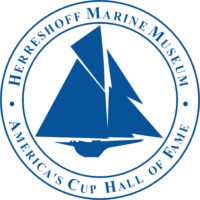

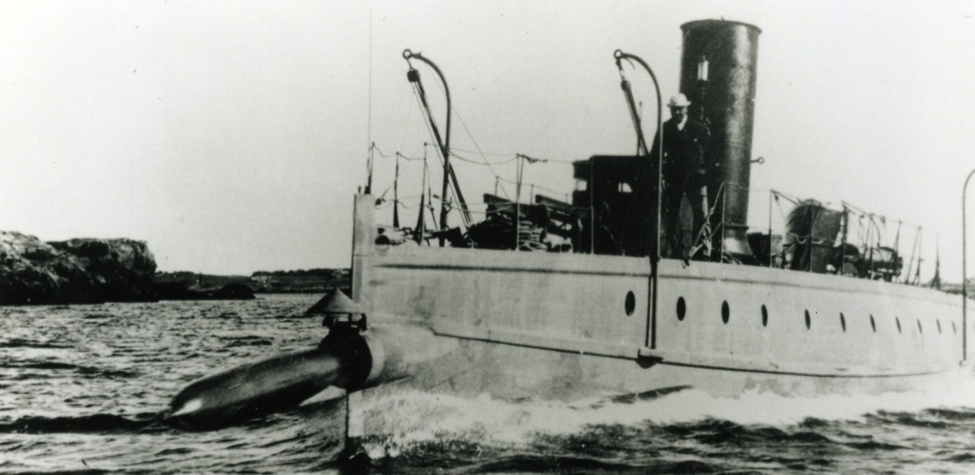
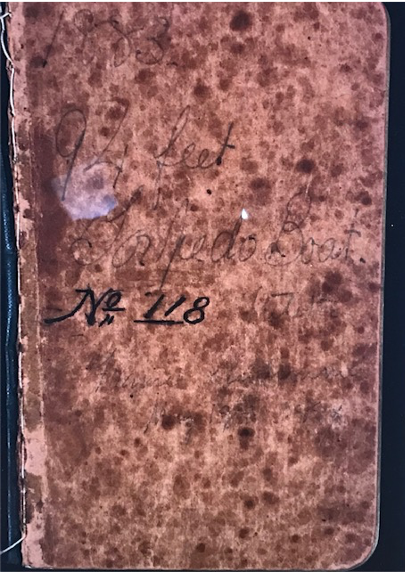
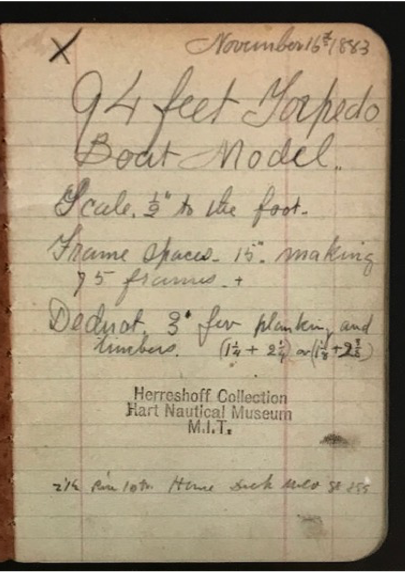
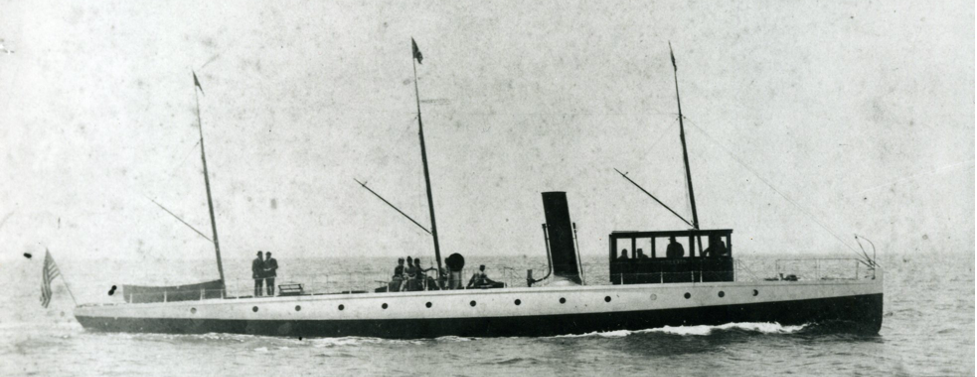
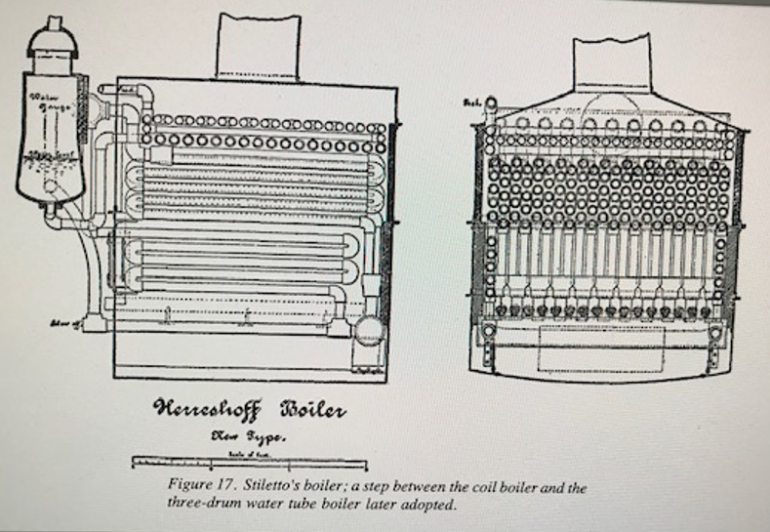
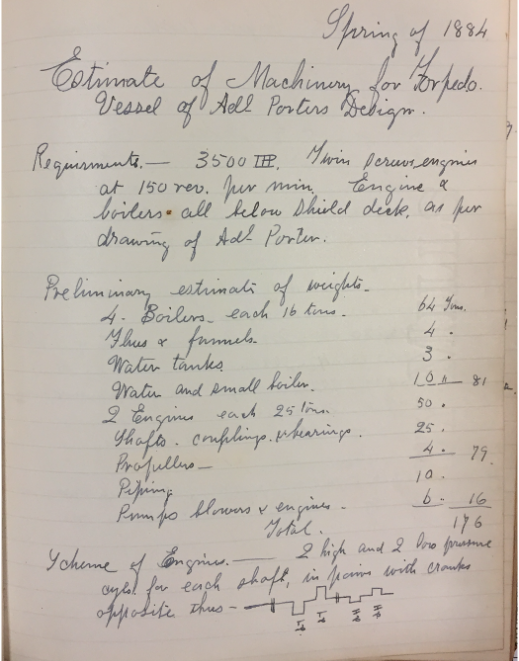
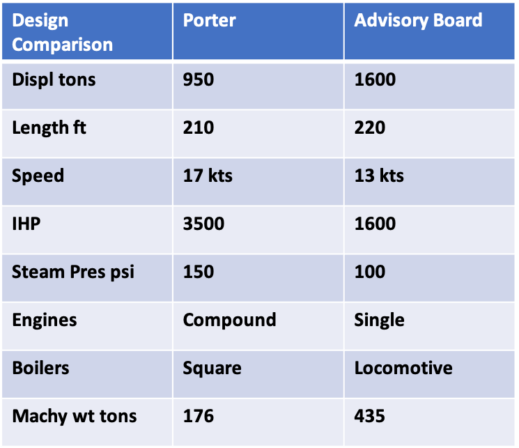

Fascinating history suggesting that, when politicians and professional desk-minders are involved in matters of science, nothing much has changed.